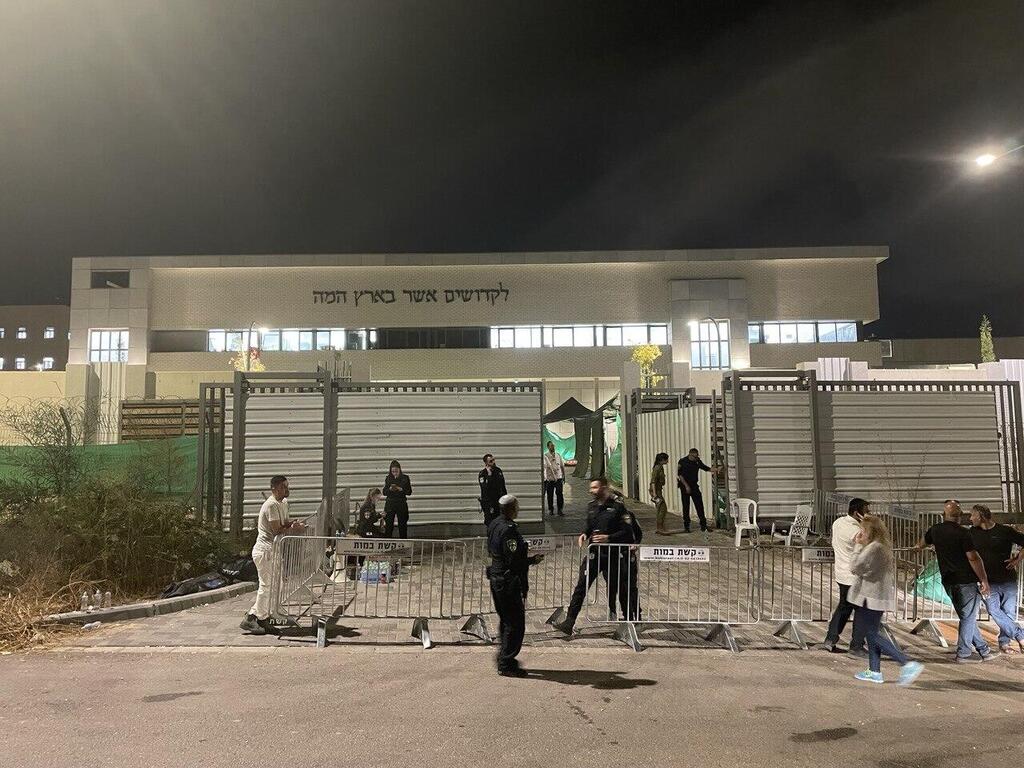Getting your Trinity Audio player ready...
Dr. Ron Azaria, aged 54, is a well-established plastic surgeon who has dealt with a range of medical cases throughout his career. Recently, he was called upon to work a night shift at the Shura camp of the military rabbinate near Ramla. His task was to assist in the grim job of sorting and identifying the bodies of those who had tragically lost their lives in an attack carried out by Hamas terrorists inside Israeli territory.
Read more:
Dr. Azaria has a wealth of experience in dealing with various medical emergencies, including burn victims, war casualties, and victims of terrorist attacks. He has even treated terrorists who were injured in the aftermath of their own explosions. However, the sights he encountered at the Shura camp profoundly affected him. He expressed his shock and distress at the sight of the devastation caused by the recent attack, stating, "Until last night, I thought I had seen everything... But I have never seen such things in my life."
Ambulances arriving on scene
The seasoned doctor's experience was reminiscent of a journey back in time to 1945, akin to liberating a concentration camp. "It was as if I had stepped into a time machine, journeying back to 1945 to free a concentration camp. The sights were beyond inhuman, almost inconceivable," he shared, describing the horrors he had witnessed.
"The sheer number of bodies was staggering, transported in refrigerated food trucks. The terrorists had taken the cruel step of trapping the bodies, creating a deadly trap for those who would attempt to recover them. Their aim was solely to inflict harm, obliterate and erase," he continued, recounting the dreadful scene. He struggled to find words to express the magnitude of what he'd seen. "I cannot find the vocabulary to articulate the horror I witnessed. Those responsible are not merely animals; they are less than animals - they are sub-animals."
Azaria shared his heart-wrenching experience, saying, "As I was departing in the morning, another truck rolled in. A man from ZAKA search and rescue informed me that it was loaded with the bodies of 50 infants and children. These images need to be made public. A single image like this will expose to the world the kind of enemies we are confronting."
Upon leaving the base, Azaria expressed his deep disturbance, stating, "As a physician, I was deeply upset. I drove home by the seaside, stopping to wade into the water. I felt a compelling need to cleanse myself of the malevolence I had encountered. They orchestrated their plan meticulously. Maps and aerial photos were found on the terrorists' bodies. Each one knew his designated entry point."
Before seeking solace in the sea, Azaria, still reeling from the horrifying scenes, penned a brief note to himself. "Tonight, I found myself on 'another planet', a place right in the heart of our country that was unlike anything I had ever known. It was a perverse, 21st-century echo of the Nazis. Infants? Children? Families? Treated in this way? This is not just evil, it is a malevolence that transcends human comprehension. There's no way their God would condone such actions in his name. As a human being, a father, a Jew, and a doctor, this cannot be allowed to happen again, especially after we vowed 'never again'. This is beyond my comprehension."
At the military rabbinate base near Ramla, bodies of both soldiers and civilians from the Gaza Strip are ceaselessly delivered. Although the members of the rabbinate are accustomed to managing bodies in special operations or during times of war, the volume of casualties in this conflict is unprecedented even for them.
At the gateway to the base, a makeshift city of tents and refrigerated units have been erected. Here, the majority of the bodies received undergo identification. If a particular case poses complex identification challenges, or if the deceased is an IDF soldier, the body is moved to the base's permanent facility for further identification.
Each body that arrives at the base undergoes an initial identification process conducted by the rabbinate - which includes DNA testing and additional photography. In the next stage, the data is cross-referenced with various national databases or a relative's DNA test. Following this, a police procedure is undertaken and a burial permit is issued. Once the identification process is concluded, an ambulance from ZAKA Tel Aviv transports the body to the refrigerated chambers of the central cemeteries. Subsequently, the body is moved to the cemetery where the burial ceremony will take place.





